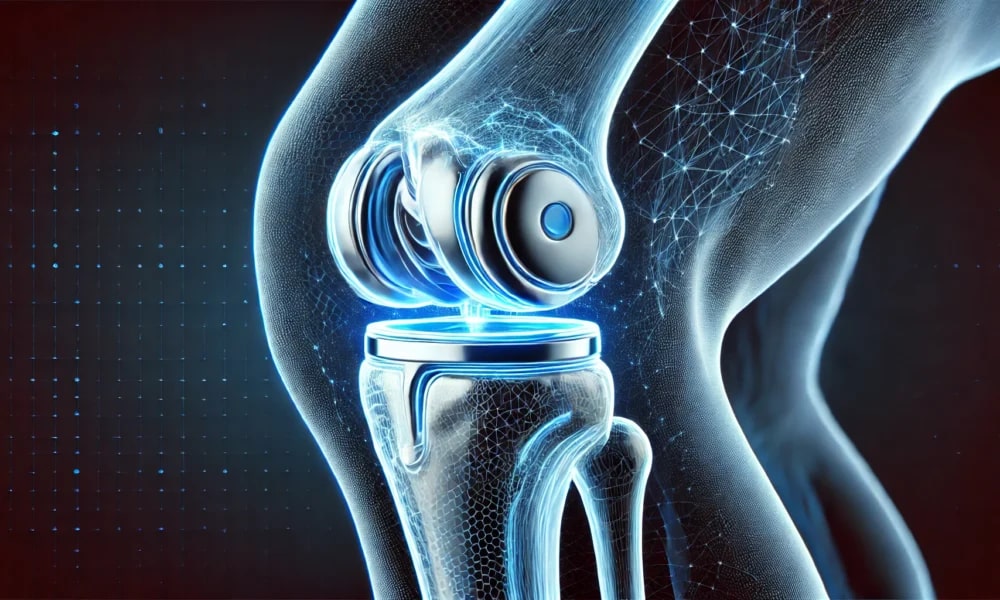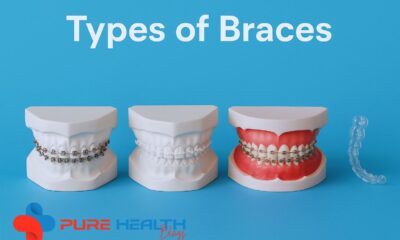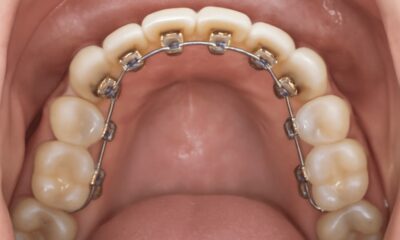General Health & Wellness
Complete Guide to Knee Replacement Surgery & Recovery
Discover the best exercises, expert recovery tips, and lifestyle advice to ensure a smooth and speedy recovery after knee replacement surgery.

Knee replacement surgery enables significant medical transformation for patients dealing with constant pain alongside reduced movement along with reduced life quality because of damaged joints. Patients who undergo knee replacement surgery experience a new period of life due to arthritis-related joint damage or injuries and normal aging conditions. People undergoing knee replacement surgery must follow both a planned recovery process together with appropriate health maintenance and behavior adjustments after surgery. The following commentary focuses on recovery fundamentals while presenting information about postoperative exercises together with surgical limitations and recovery expectations.
Top 10 Exercises After Knee Replacement
1. Ankle Pumps
The exercise improves blood flow to reduce chances of blood clot formation. Duplicating the motion of using the gas pedal with your foot will do the trick.
2. Quad Sets
You should pull your thighs tightly but keep your legs in a straight position. Keep the leg positioned in the bent position for five seconds before letting it go. Total conception of the quadriceps occurs through this exercise without knee mobility.
3. Heel Slides
Position your body on the floor while transporting your heel slowly towards your bottom. This motion enhances flexibility together with increased knee movement abilities.
4. Straight Leg Raises
Keep your leg entirely straight before raising it into the air. The quadriceps receive strength training support and knee stabilization benefits through this exercise.
5. Knee Bends (Seated or Lying)
Recover your mobility by steadily increasing the amount of knee bending. Gaining full mobility requires this exercise to be performed correctly.
6. Short Arc Quads
Under your knee place a rolled towel then extend your leg in a straight position. Going through this exercise causes minimal muscle activity concentrated on the quadriceps because of the isolated movement.
7. Standing Knee Bends
Position yourself by holding onto a chair and perform gentle knee bends to the point of your current flexibility. The exercise development enhances both strength and mobility functions.
8. Heel Raises
Rise your feet while standing near a chair. Such exercises exercise the calves while simultaneously developing balance abilities.
9. Stationary Biking
Gentle cycling becomes appropriate to introduce after some time for improving joint flexibility and cardiovascular health.
10. Walking
Walking supports the most essential function because it enhances both body movement and blood flow throughout the body. Begin by using a walker or cane to walk short distances which you should extend over time.
What Can I Never Do After Knee Replacement?
The procedure enables people to resume regular daily activities but permanent avoidance of specified movements is required. Performing running jumps and skiing activities poses substantial risk to artificial knee joints because they result in excessive stress that might reduce the implant’s lifespan prematurely. Minimize both kneeling positions as well as squatting because they may continue to be uncomfortable unless your surgeon indicates otherwise.
The Most Important Exercise After Knee Surgery
Physical therapists consider heel slides as the most important exercise for promoting flexibility. The easy movement function advances joint flexibility and it serves as vital to regain movement range. Proper motion makes all exercise movements and basic walking coordination more difficult to accomplish. The fundamental exercise for recovery success is heel slides.
Can Too Much Walking Damage a Knee Replacement?
Moderation is essential. The medical professionals recommend walking for recovery needs but doing it excessively too quickly can cause swelling and pain and inflammation in the recovering area. A proper recovery requires you to enhance your activity level steadily because your body needs time to adapt and restore itself.
The Fastest Way to Recover from a Knee Replacement
Various factors such as age together with fitness level and proper adherence to post-operation care determine the speed of recovery. These following strategies will effectively speed up recovery:
- Follow your physiotherapy plan religiously
- Healing will occur best through maintaining a balanced dietary approach.
- Ice packs should be used for swelling management.
- Avoid sedentary behavior—move often
- Keep all follow-up appointments
When patients demonstrate both resolve and endurance they can achieve their recovery objectives in the most secure and expedient manner.
The Biggest Complaint After Knee Replacement
Persistent stiffness represents one of the main complaints which patients experience. Patients tend to expect an immediate solution to pain yet understanding that recovery requires time. sectional swelling alongside scar tissue formation restricts movement which requires patients to uphold their exercise regimen according to the doctor’s instructions.
Permanent Restrictions After Knee Replacement
The people have mostly returned to their regular way of life while several constraints continue to exist.
- Avoid high-impact sports and activities
- Avoid kneeling positions and deep squatting movements.
- Be cautious with twisting movements
- Avoid lifting very heavy objects
Following these safety measures leads to longer durability of the artificial joint while stopping potential issues from occurring.
Disadvantages of Knee Replacement
Knee replacement surgery provides major advantages however patients need to consider several potential complications along with these benefits.
- Risk of infection or blood clots
- The replacement prosthesis needs revision surgery because of aging effects over time.
- The artificial knee replacement provides restricted motion capabilities than a normal knee.
- The area surrounding the surgical incision might cause sensation loss and tingling effects.
- Persistent pain may develop when healing processes fail to advance correctly.
It is necessary to make the right decision by analyzing both benefits and risks with your healthcare provider.
Best Position to Sit After Knee Replacement
The proper sitting position should improve circulation while avoiding muscle stiffness. Choose a strong chair with your back staying vertically upright while placing your feet directly on the floor. The use of soft chairs with low positions poses difficulties for rising from these seats. Taking short breaks to rest on a footstool can effectively decrease swelling amounts.
How Long is There a Risk of Blood Clots After Knee Replacement?
After surgery the highest danger of blood clot development exists in the first 2 to 6 weeks. Patients take blood thinning medications alongside performing ankle exercises as well as walking frequently to reduce the risk of blood clots. Patients need to promptly notify healthcare providers about any calf symptoms which include swelling and redness or pain.
Signs Something Might Be Wrong with Your Knee Replacement
Not all knee pain requires medical attention but specific symptoms show indication of potential medical concerns.
- Persistent or worsening pain
- Swelling that doesn’t go down
- Unusual warmth or redness around the knee
- Joint sounds during walking include clicks and pops and walking instability.
- Fever or chills indicating infection
Medical help is crucial when any of these symptoms appear.
Who is a Bad Candidate for Knee Replacement?
Every individual does not qualify for the procedure. The following medical conditions create possible surgery complications for patients:
- Severe obesity
- Uncontrolled diabetes
- Infection in the body
- Heart conditions or other major health issues
- Some patients either lack motivation to follow rehabilitation therapy or show poor motivational capacity.
These clinical factors lead to poor surgical results and delayed recovery process.
Age Limit for Knee Replacement Surgery
There is no strict age limit. The surgical procedure typically focuses on patients from age 60 to 80 but young people can become candidates when they suffer from critical injuries or health diseases affecting their knees. Good health is not a restriction for elderly patients to gain advantages from orthopedic procedures. Less important than surgery tolerance and health status is the age of the patient
What Happens if You Delay Knee Replacement Surgery?
Postponing surgery can lead to worsening joint damage, increased pain, and reduced mobility. Over time, surrounding muscles may weaken, and the joint may become severely deformed. Delaying can make eventual surgery more complex and recovery more difficult.
Final Thoughts
Total knee replacement surgery functions as an effective remedy against long-term knee pain coupled with immobility but patients must dedicate themselves to both recovery and ongoing maintenance of the procedure. Patients who follow medical advice along with anticipated lifestyle changes and proper knowledge of their recovery process will achieve improved results. Partial restrictions persist but surgery enables people to achieve rewarding active lifestyles following their operations. Patients who actively participate in their care experience their challenging surgery become a beneficial transformation of their lives.
CTA: Is your readiness up to date for advancing in recovery?
For a successful rehab start you must consult your doctor while being active and commit completely to your recovery process. A properly cared-for new knee needs the best possible attention.
FAQs related to knee replacement surgery:
1. What is the complete timeline for complete healing after undergoing knee replacement surgery?
The recovery period typically spans 3 to 6 months but accomplishing complete strength and flexibility might need about twelve months of time.
2. Does the surgical procedure allow kneeling positions after the replacement?
The procedure makes kneeling painful after surgery but individuals might recover their kneeling ability as the weeks pass and their skills improve through practice.
3. Does the return to work become possible after undergoing knee replacement surgery?
Yes, depending on your job. The recovery period for desk work should take 4–6 weeks yet physically strenuous occupations need a minimum of 3 months to resume.
4. Is knee replacement surgery painful?
The surgical pain requires medicine treatment yet it reduces substantially throughout the initial weeks after surgery.
5. Which factors determine the lifespan of implanted knees?
Proper care together with suitable activity modifications enable modern knee replacements to have a lifespan of 15–20 years or more.
6. The ability to drive returns to most patients 4–6 weeks after knee replacement surgery.
Most patients regain driving ability during the 4–6-week recovery period if they stop taking narcotic painkillers and show safe movement capabilities.
7. Which post-surgical activities are unsafe for people following knee replacement?
Knee implant survival depends on minimizing intense activities like running as well as jumping and heavy lifting since these actions shorten implant life.
8. Does my knee adopt natural sensations following its replacement?
Although artificial knees differ from original knees the majority of people achieve both pain relief along with improved movement.
Related Blogs:

 General Health & Wellness1 month ago
General Health & Wellness1 month agoStartling Facts: Can Stress Cause Hemorrhoids? Know It All

 Men & Women's Health3 weeks ago
Men & Women's Health3 weeks agoLatest Types of Braces: Unexpected Costs, Benefits & Best Treatments

 Mental Health3 weeks ago
Mental Health3 weeks agoThe Silent Panic Attack Trap That’s Hurting Millions Now

 Diet & Nutrition1 month ago
Diet & Nutrition1 month agoRare Lemon Balm Benefits That Will Calm Your Mind & Heart

 Diet & Nutrition2 months ago
Diet & Nutrition2 months agoHow to Make a Lemon Balm Tea for Effective Weight Loss

 Men & Women's Health2 months ago
Men & Women's Health2 months agoComplete Truth About Lingual Braces Costs, Benefits And Care

 Recipes2 months ago
Recipes2 months agoHow to Make Melissa Tea at Home: A Step-by-Step Guide

 General Health & Wellness2 months ago
General Health & Wellness2 months agoIs Your Unusual Heel Pain a Scary Serious Problem?























































